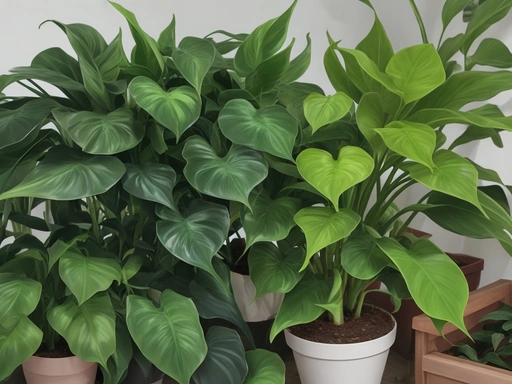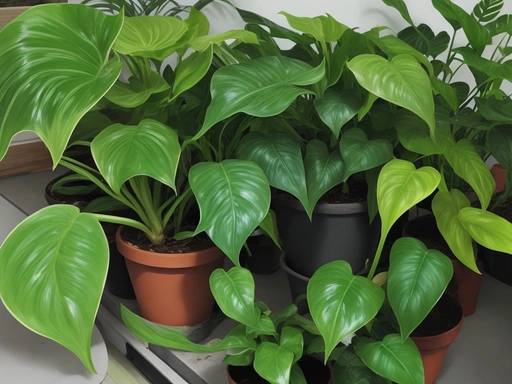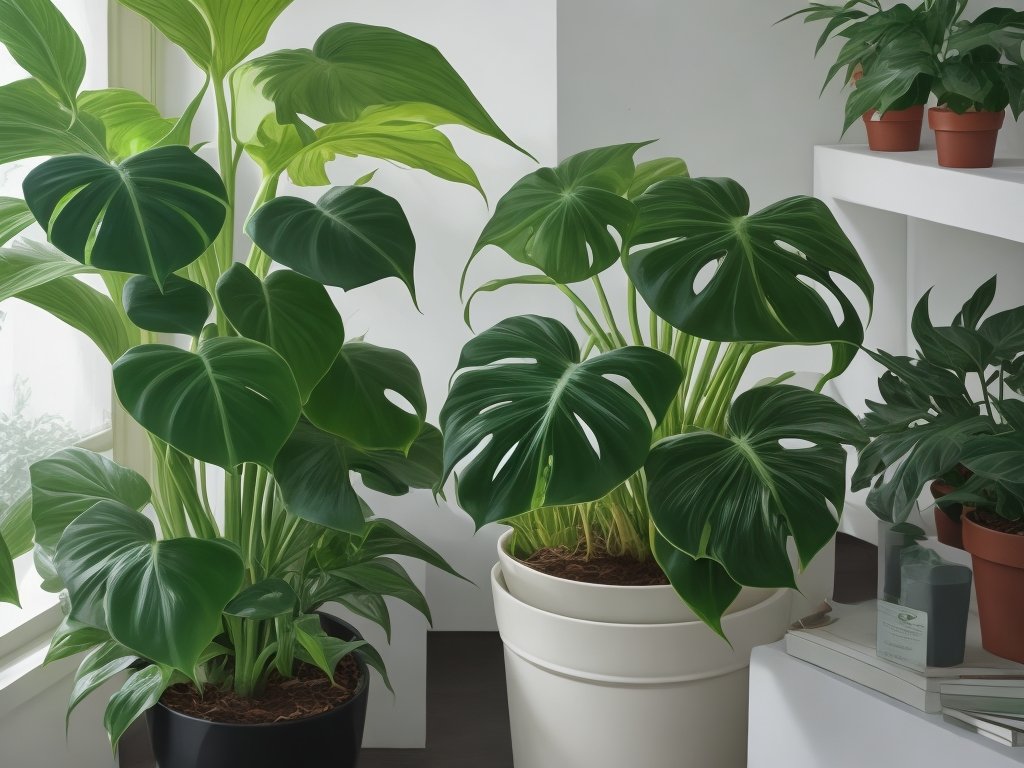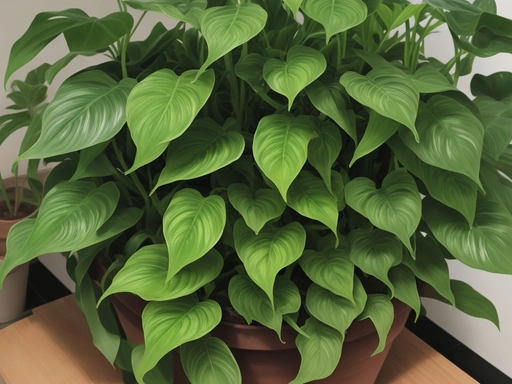Philodendron Vs Monstera: The Green Showdown
Key Takeaways:
- Philodendron and Monstera belong to the same family, but they have distinct characteristics.
- Philodendron has heart-shaped leaves and tends to be more compact, while Monstera has elongated, perforated leaves and grows larger.
- Both plants are relatively easy to care for and can thrive in indoor environments.
- Philodendron and Monstera are popular houseplants that can serve as decorative elements in your home or office.
Are you a plant lover looking to add some greenery to your space?
Well, look no further than the Philodendron and the Monstera.
These popular houseplants have taken the plant world by storm, but what sets them apart?
In this blog, we’ll compare these two beauties in terms of their appearance, care and maintenance needs, toxicity levels, popular varieties, and how they can spruce up your interior design.
Get ready to dive into the world of Philodendron vs Monstera and discover which one will be the perfect addition to your plant family.
| Features | Philodendron | Monstera |
|---|---|---|
| Foliage | Broad, heart-shaped leaves | Larger, perforated and split leaves |
| Growth Pattern | Vining, climbing | Vining, climbing |
| Size | Medium | Large |
| Light Requirements | Indirect bright light | Indirect bright light |
| Watering | Moderate | Moderate |
| Tolerance | More tolerant to lower light conditions | Tolerates moderate to bright light |
| Propagation | Cuttings, division | Cuttings, division |
Philodendron vs Monstera: Appearance and Size
Both Philodendron and Monstera have distinct appearances, with Philodendron having heart-shaped leaves and Monstera having large, fenestrated leaves.
In terms of size, Monstera tends to grow larger compared to Philodendron.
Appearance of Philodendron
Philodendron plants have heart-shaped leaves that come in various shades of green. Some varieties have leaves with vibrant patterns or variegations.
The leaves can be glossy or matte, depending on the species.
Philodendrons can grow to be quite large, with some species producing long vines that can climb or trail. Overall, they have an attractive and tropical appearance that adds a touch of freshness to any space.

Appearance of Monstera
Monstera plants have large, heart-shaped leaves with distinct splits and holes, commonly referred to as “fenestrations.” These unique leaves give Monstera a tropical and vibrant appearance. The foliage is usually dark green and glossy, adding a touch of natural beauty to any space.
The plant can grow to be quite large, reaching up to 10 feet in height, making it a stunning statement piece in any room.
Size differences between Philodendron and Monstera
Philodendron plants are generally smaller in size compared to Monstera plants.
Philodendron plants usually grow to be around 2-6 feet in height, with some varieties reaching up to 10 feet.
On the other hand, Monstera plants can grow much taller, ranging from 10-30 feet in height.
Monstera plants have larger leaves and are known for their iconic split-leaf pattern, which can be quite impressive in size.
So, if you’re looking for a larger and more towering plant, Monstera might be the way to go.

Philodendron vs Monstera: Care and Maintenance
Taking care of your Philodendron and Monstera is essential for their health and growth.
Light requirements for Philodendron
Philodendrons thrive in bright, indirect light. They can tolerate lower light conditions, but their growth may slow down.
Avoid direct sunlight as it can scorch the leaves.
Place your Philodendron near a window with a sheer curtain or in a well-lit room. Regularly rotate the plant to ensure even growth.

Light requirements for Monstera
Monstera plants thrive in bright indirect light, making them perfect for well-lit indoor spaces. They can also tolerate lower light conditions, but growth may be slower.
Avoid direct sunlight as it can scorch the leaves.
Place your Monstera near a window with sheer curtains or on a shaded patio for optimal light conditions.
Watering needs for Philodendron
Philodendrons have moderate watering needs. It’s important to let the top inch of soil dry out between waterings.
Check thePhilodendrons prefer temperaturesfinger into the soil.
They prefer to be slightly moist but not waterlogged. Overwatering can lead to root rot, so be cautious.
Provide good drainage to prevent water accumulation.
Water less during winter when growth slows down.

Watering needs for Monstera
Water your Monstera when the top inch of soil feels dry to the touch.
They prefer slightly moist but not soggy soil.
Water thoroughly until water drains out of the bottom and empty the saucer to prevent root rot.
Reduce watering in winter when growth slows down.
Temperature and humidity preferences for Philodendron
Philodendrons prefer temperatures around 65-85°F (18-29°C) during the day and no lower than 55°F (13°C) at night. They thrive in moderate to high humidity levels, ideally between 40-60%.
Make sure to keep the humidity stable by misting the leaves or using a humidifier.
Temperature and humidity preferences for Monstera
Monstera plants prefer temperatures between 65 to 75 degrees Fahrenheit during the day, and slightly cooler temperatures of 60 to 65 degrees Fahrenheit at night.
They thrive in moderate to high humidity levels, ideally around 60% to 70%.
Providing good airflow and misting the leaves can help maintain the required humidity.
Avoid exposing Monstera to drafts or sudden temperature changes, as they can be sensitive to those.
Fertilizing requirements for Philodendron
Philodendrons have moderate fertilizer needs. During the growing season, which typically occurs in spring and summer, you can fertilize your Philodendron once every 2-4 weeks.
A balanced, water-soluble fertilizer with an NPK ratio of 20-20-20 or 10-10-10 is suitable.
Dilute the fertilizer to half strength and apply it to the soil around the base of the plant. Avoid over-fertilizing, as this can lead to fertilizer burn or nutrient buildup in the soil.
During the dormant season in fall and winter, reduce or stop fertilizing altogether.
Always read and follow the instructions on the fertilizer package for best results.
Fertilizing requirements for Monstera
Monstera plants thrive with regular fertilizing during the growing season (spring and summer). Use a balanced indoor plant fertilizer, diluted to half strength, every 4-6 weeks.
Avoid over-fertilizing to prevent leaf burn.
Remember to water the plant before fertilizing to avoid root damage.
Pruning and propagation for Philodendron
Pruning and propagation for Philodendron is quite simple.
When it comes to pruning, you can trim off any dead or yellowing leaves to keep the plant looking neat.
To propagate a Philodendron, you can take stem cuttings and place them in water or soil until they develop roots.
It’s a great way to grow new plants!
Pruning and propagation for Monstera
Pruning and propagation are important for Monstera plants.
To prune, simply remove dead or damaged leaves to encourage healthy growth.
For propagation, you can either take stem cuttings or air layering.
Place the cuttings in water or a well-draining soil mix until they develop roots.
Propagation is a great way to create new Monstera plants for yourself or to share with others.
Philodendron vs Monstera: Toxicity
Philodendron and Monstera plants can be toxic to humans and pets, so it’s important to be aware of the potential risks.
Philodendron toxicity and effects on humans and pets
Philodendrons are toxic to both humans and pets. The plant contains calcium oxalate crystals, which can cause irritation and inflammation if ingested.
Symptoms may include mouth and throat swelling, difficulty swallowing, nausea, and vomiting.
It’s important to keep Philodendron plants out of reach and seek medical attention if any adverse reactions occur.
Monstera toxicity and effects on humans and pets
Monstera plants are mildly toxic to humans and pets.
If ingested, they can cause symptoms such as mouth and throat irritation, drooling, vomiting, and difficulty swallowing.
It’s important to keep Monstera plants out of reach of children and pets to avoid any potential harm.
If you suspect ingestion, seek immediate medical attention for humans and veterinary care for pets.
Philodendron vs Monstera: Popular Varieties
Let’s dive into the popular varieties of Philodendron and Monstera.
Popular Philodendron varieties
Popular Philodendron varieties include the Philodendron Birkin, with its striking white-striped leaves, and the Philodendron Pink Princess, known for its beautiful pink variegation. Another favorite is the Philodendron Brasil, which features vibrant green leaves with yellow variegation.
The Philodendron Micans is also well-liked, with its velvety, heart-shaped leaves in deep shades of green.
Lastly, the Philodendron Lemon Lime is a favorite for its vibrant lime green foliage.
Popular Monstera varieties
Some popular Monstera varieties include Monstera deliciosa, also known as the Swiss Cheese Plant, Monstera adansonii, commonly known as the Monkey Mask Plant, and Monstera obliqua, also called the Swiss Cheese Vine.
These varieties are loved for their unique foliage patterns and make stunning additions to any indoor space.
Philodendron vs Monstera: Aesthetic Appeal and Use in Interior Design
Looking to enhance your interior design aesthetic?
Discover the unique charm of Philodendron and Monstera plants.
Find out how these houseplants can elevate your home decor.
Philodendron as houseplants and their aesthetic appeal
Philodendron houseplants are highly sought-after for their stunning aesthetic appeal. With their vibrant green foliage and unique leaf shapes, they add a touch of natural beauty to any space.
Whether you choose a trailing variety to hang in a macrame planter or a large-leafed philodendron as a statement piece, these plants are sure to enhance the aesthetic of your home.
Their lush foliage creates a soothing and calming atmosphere, making them a perfect addition to any interior design style.
Monstera as houseplants and their aesthetic appeal
Monstera plants make stunning houseplants because of their lush, tropical appearance. With their large, glossy green leaves that develop unique splits and holes as they mature, Monstera plants add a touch of natural beauty to any indoor space.
These striking leaves, often referred to as “Swiss cheese plants,” create a visually captivating and modern aesthetic.
Their vibrant green color and distinctive patterns make them a popular choice for interior design, adding a fresh and tropical vibe to homes, offices, and other spaces.
How to incorporate Philodendron and Monstera in interior design
To incorporate Philodendron and Monstera in interior design, you can:
- Use trailing or climbing varieties to add vertical interest, such as hanging them from macrame planters or training them up trellises.
- Place them in corners or empty spots to fill in the space and create a lush, tropical feel.
- Use them as focal points by placing them in decorative pots on side tables or shelves.
- Mix them with other houseplants to create a diverse and visually appealing display.
- Consider the size and growth habit of each plant to ensure they have enough space to thrive and don’t overcrowd the room.
- Experiment with different textures and leaf shapes to add visual interest and create a dynamic composition.
Remember to consider the lighting conditions and care requirements of each plant to ensure they are placed in suitable areas and receive the attention they need to thrive in your space.
Philodendron vs Monstera: Frequently Asked Questions
Are Philodendron and Monstera the same plants?
No, Philodendron and Monstera are not the same plants. While they share similarities, they belong to different plant families.
Philodendrons have heart-shaped leaves, while Monstera leaves have distinct splits and holes.
Their care requirements and toxicities also differ.
Can Philodendron and Monstera be grown together?
Yes, Philodendron and Monstera can be grown together as they have similar care requirements.
They both prefer bright, indirect light, moderate watering, and high humidity.
Just make sure to provide enough space for their growth and consider their eventual size when choosing a pot.
Which plant is easier to care for, Philodendron or Monstera?
Philodendron is generally easier to care for compared to Monstera. It tolerates a wider range of light conditions, requires less frequent watering, and is more forgiving when it comes to humidity levels.
Philodendron also tends to be less demanding in terms of pruning and propagation.
However, both plants are relatively low-maintenance and great choices for beginner plant parents.
Can Philodendron and Monstera be kept in low light conditions?
Yes, Philodendron and Monstera can tolerate low light conditions, but they won’t thrive. They prefer bright, indirect light for optimal growth.
In low light, their growth may slow down, and they might become leggy.
If you can, provide them with at least moderate light to keep them happy and healthy.
How often should I water my Philodendron and Monstera plants?
Water your Philodendron and Monstera plants when the top inch of their soil feels dry to the touch.
This usually translates to watering them once every 1-2 weeks.
Overwatering can lead to root rot, so it’s important to ensure the soil is dry before watering again.
Remember to adjust watering frequency based on your specific environment and plant’s needs.
Final Verdict
While both Philodendron and Monstera are beloved houseplants, they have distinct differences in appearance, size, care, and toxicity. Philodendron species have a variety of leaf shapes and colors, while Monstera is known for its unique fenestrated leaves.
Philodendrons tend to be smaller, making them suitable for smaller spaces, while Monstera can grow much larger.
Both plants have similar light and watering needs, preferring bright indirect light and moderate water. Philodendron is generally more tolerant of lower light conditions, while Monstera thrives in brighter light.
Both plants are toxic to humans and pets if ingested.
In terms of popular varieties, Philodendron has a wider range of choices, while Monstera’s “Swiss cheese” look is highly sought after. Both plants can add a touch of green and beauty to any interior design, with Philodendron being versatile in hanging baskets and trailing from shelves, and Monstera making a bold statement as a floor plant or in a large container.
As for maintenance, both plants require occasional pruning and can be propagated easily.
To sum up, while Philodendron and Monstera share some similarities, they each have their own unique characteristics that make them a worthwhile addition to any plant lover’s collection, providing both aesthetic appeal and a touch of nature to any space.







